Why a small group of women walks around Delhi at midnight
It’s 11.20 pm on a Saturday, but the Natural’s ice cream parlour in Delhi’s Lajpat Nagar is still bustling. A group of us are gathering here for the Women Walk at Midnight. The event is exactly what it sounds like: every month or so, several women (the strength has varied between four and 31) walk through a different neighbourhood of the city late at night.
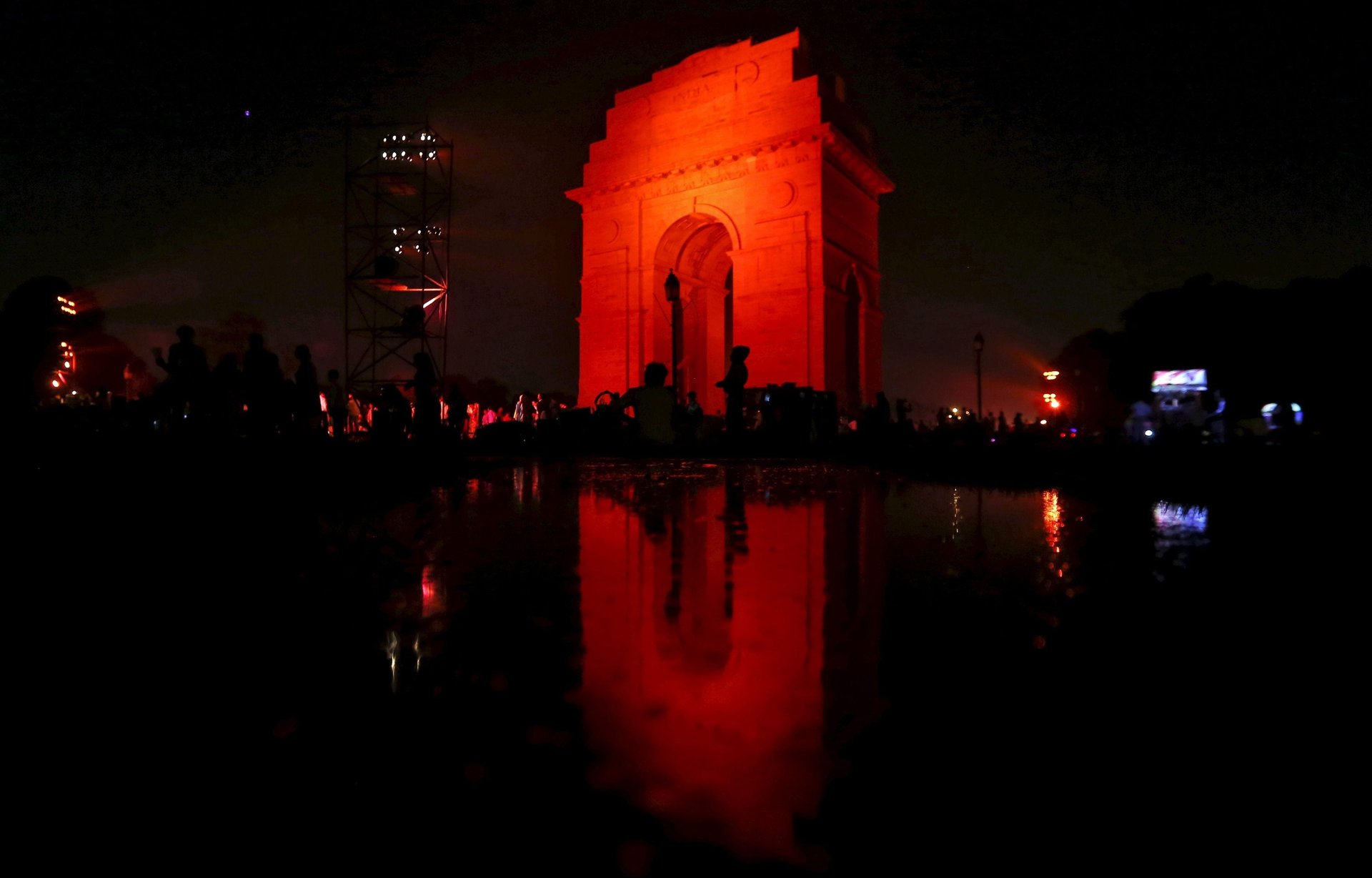

It’s 11.20 pm on a Saturday, but the Natural’s ice cream parlour in Delhi’s Lajpat Nagar is still bustling. A group of us are gathering here for the Women Walk at Midnight. The event is exactly what it sounds like: every month or so, several women (the strength has varied between four and 31) walk through a different neighbourhood of the city late at night.
They do it because it’s a time considered unsafe for women in the national capital, and because they believe women should be able to walk around without fear. Besides, the more women occupy public spaces, the more they help to normalise their presence in such places at all times of the day—and night.
Women Walk at Midnight is one of a handful of communities around India that are inspiring women to reclaim their right to be in public places. According to Jasmeen Patheja, founder of Blank Noise, which has organised several midnight walks, such initiatives work to “change the story of fear”.
We arrive in ones and twos, till there are eight of us, a number down from the 20-odd who had registered for this walk. Meghna, the walk coordinator—there’s always someone from the neighbourhood to decide a route, and make sure participants don’t get lost in the by-lanes—wants to begin the journey with strawberries and cream from Natural’s. Why? Because it’s in season, and the walk is supposed to be fun, and ice cream is fun. Because women should be able to step out and do something quite as ordinary as eating dessert at 11-something in the night.
After brief introductions and simple ground rules (“This is supposed to be fun. We don’t have to go anywhere you don’t want to go. We don’t have to do anything you don’t want to do. If at any time you want to turn back, we’ll stop and help you get back.”), we are on our way, at a leisurely 3 km an hour.
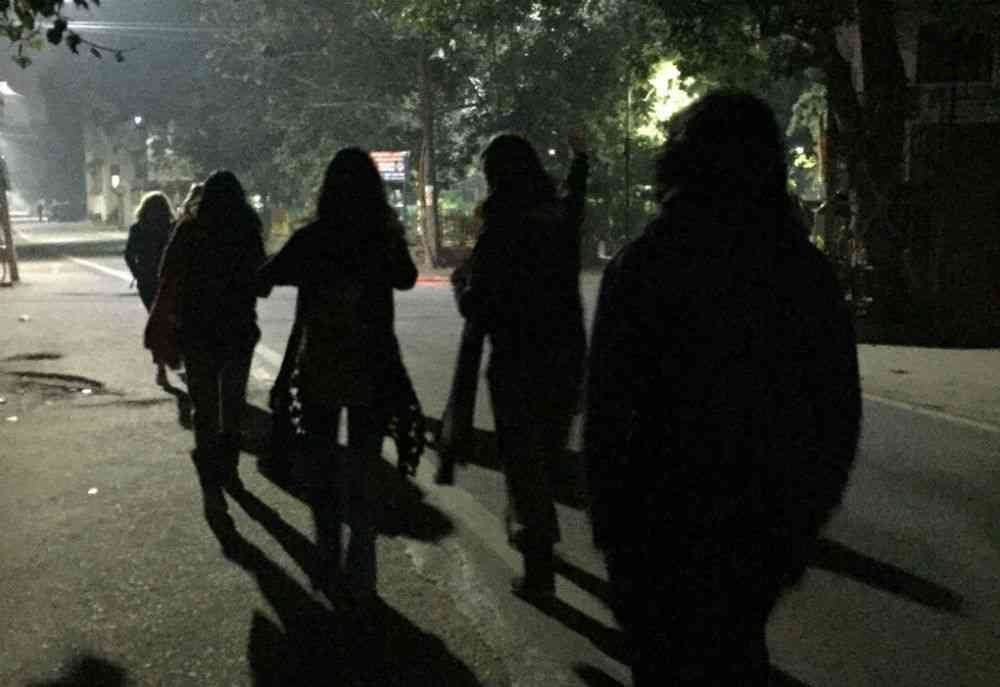
Day and night
Each day, Central Market in Lajpat Nagar draws thousands of visitors. Pedestrians jostle among makeshift stalls by the side of the roads. Rickshaws wrestle with autos. Car owners lock horns with one another, and with parking attendants. By night, these streets open up. The roadside stalls disappear into nooks unseen by day. The empty-ish parking spaces look huge. The area is populated by watchmen, taxi drivers, the homeless who sleep under shop awnings, and on that night, us.
“If neighbourhoods could be assessed as personalities, Lajpat during the day, surely looks like an extrovert to me,” Meghna said. “At night, the streets pack the entire show away and put it behind shutters to rest, leaving the roads wide and open. Whether it is for a stroll in the neighbourhood or a resolute march through the shut market to reach 24SEVEN in search of a midnight snack, walking here…at night is both fun and frightening.”
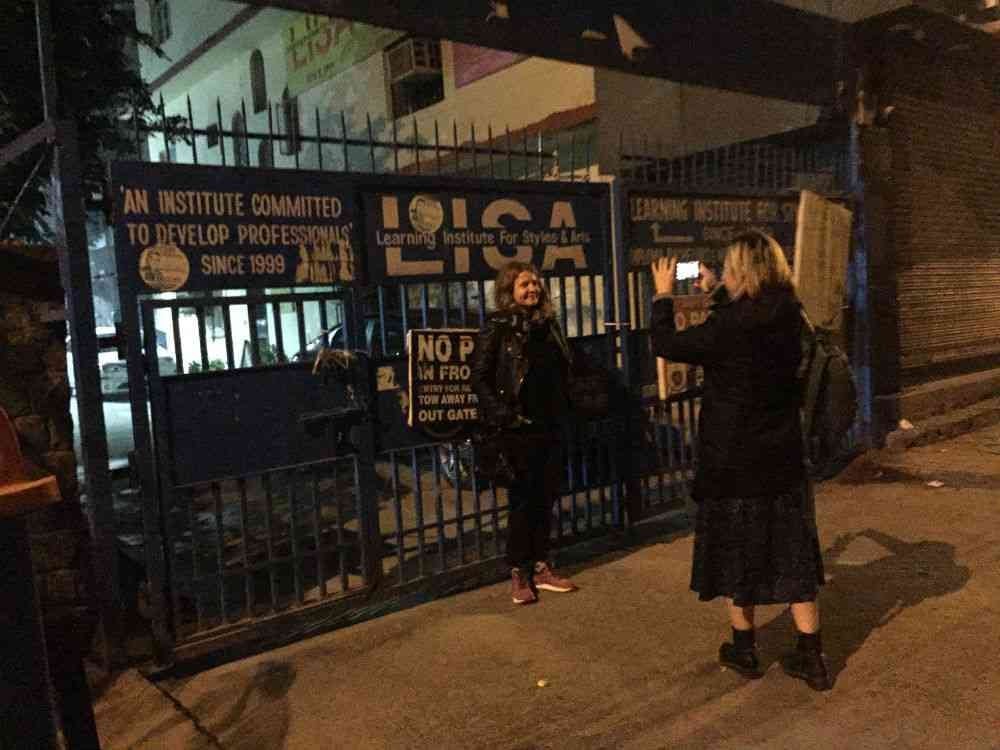
There is a reason for the anxiety. At 869 women to every 1,000 men, Delhi’s sex ratio is lower than the national average. According to the latest available National Crime Bureau Report from 2016, Delhi registers more crimes against women than the national average. Of the 225 acid attacks and attempted acid attacks reported nationwide, 23 were from Delhi. Of the 66,544 women abducted in India, 4,041 were from Delhi. Delhi also accounted for 2,170 reported cases of rape in 2016. It is quite possible that more crimes are reported in Delhi than in other parts of the country. Yet, the absolute numbers paint an undeniably bleak picture for women’s safety in Delhi.
Though the walk is conducted in this context, the intent is not to criticise Delhi. Or even to say, “Look, how brave we are to step out at night in Delhi.” It is a way to assert women’s right to walk, to strip away the crime statistics’ power to paralyse, and replace it with a different narrative.
The “story of fear,” Patheja says, is the reason given to women to prevent them from venturing out at night. By walking, sleeping or doing nothing in public places, a woman changes her relationship with the city. “It’s all about building a process,” Patheja explained on the phone from Bengaluru. “It’s iterating and creating new personal and collective memories. So it’s not just located in fear and shame and guilt and pain, but also in pride and belonging and celebration. And that shifts the story of fear.”
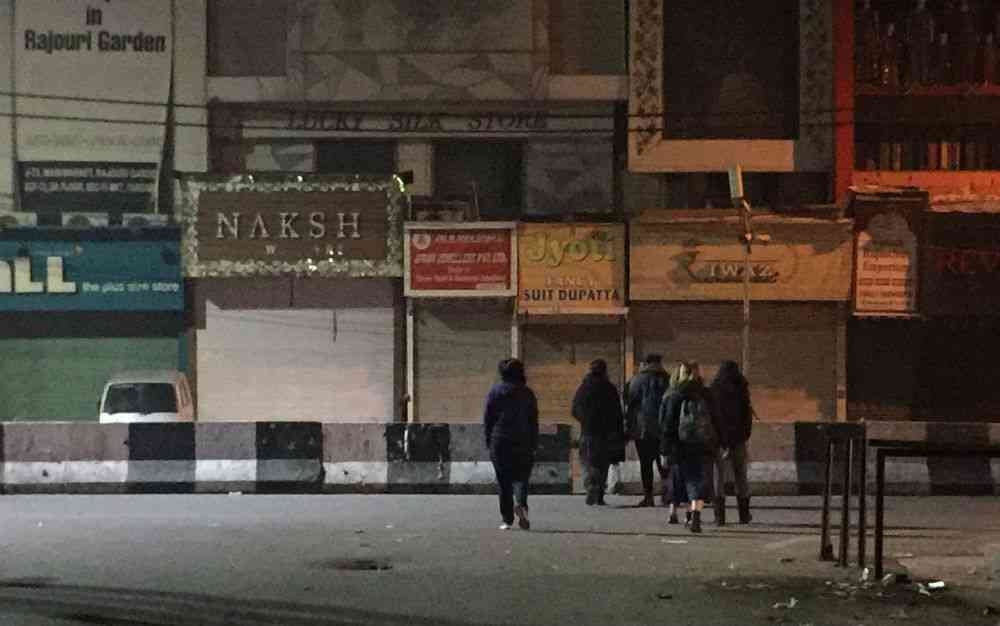
Blank Noise has organised many night walks—among other events—in Bengaluru since 2003. “For our first night walk, a group of us walked from MG Road to Malleshwaram, stopping along the way, eating at places along the way, getting to know our city,” Patheja said. “We’ve done this over the years in Malleshwaram. In 2006, a policeman followed us, saying, ‘You girls shouldn’t be out late at night.’ The police were trying to protect us so there was no report of violence from their neighbourhood.”
Different motivations
From Natural’s, Meghna leads us through Lajpat Nagar III, with its mix of posh homes and builder flats, to the 24SEVEN to buy a large bag of Doritos for the group. We then head to the EMU train station (part of Delhi’s local train network which predates the Metro), the Afghan Market, and finally the Central Market square. During the day, the area is full of displays of brightly coloured women’s underwear and suit lengths, but it is so quiet at night that we wake a couple of sleeping dogs.
Each of us has our own reason for being here. Lisa Gilardino, a 41-year-old performing arts curator and producer from Bologna in Italy, has been in Delhi for a week, and she is here to study how the organisers create an alternative experience of the city through the walk.
Meghna, a student in a Noida university, offered to lead the walk because in two years of living in Lajpat Nagar with friends, she realised “when we walk together, the fun gets magnified, and the fright gets compromised”.
I went because I am scared to venture out alone at night, and I don’t want to be afraid if I can help it.
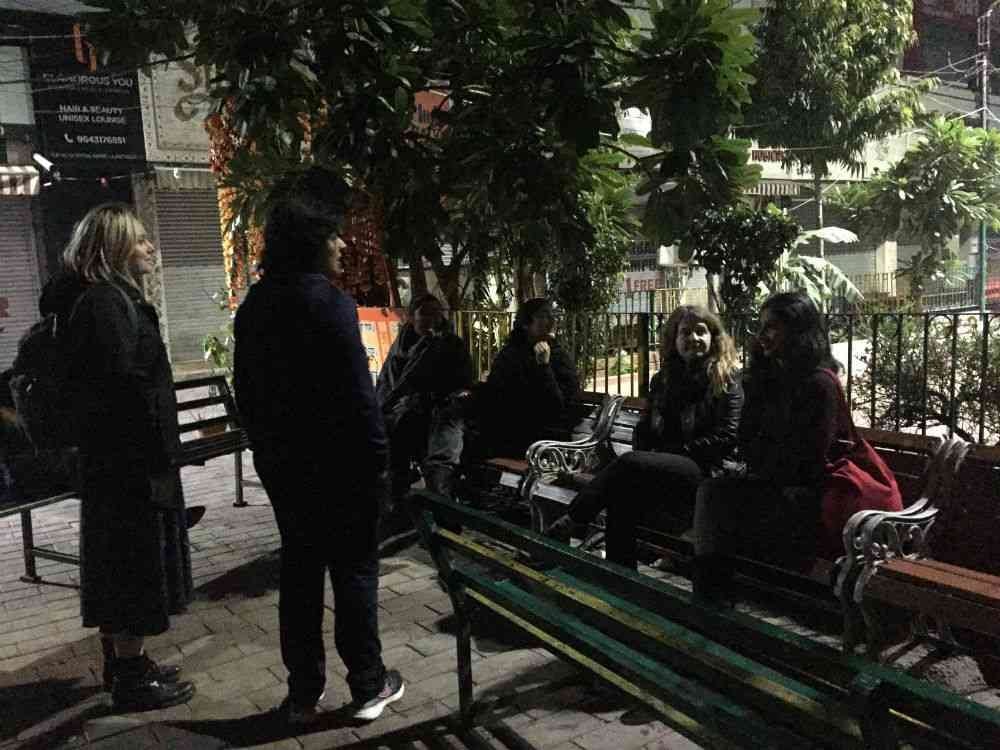
Women Walk at Midnight started in 2013, as a result of one woman’s desire to walk in New Delhi for 24 hours—to test her endurance. She didn’t want to be quoted for this story, because she feels the midnight walk has become bigger than her original desire. In fact, none of the organisers of the walk wished to be interviewed for this story. The point of the walk, they say, is not to gain publicity for themselves. Rather they want to promote the idea that the walk is—or should be—nothing out of the ordinary.
Towards the end of our walk, we sit for a few minutes on the benches in the market square. Someone posts on Instagram Live. But at 1.20 am, there are few people online to appreciate us. The night has been largely uneventful with one exception, when a man driving an SUV felt entitled to a “Hello, ladies” before driving off. Back at Natural’s, everything is deserted now. The walk is over. I feel a strange lightness, like a weight has been lifted off my shoulders. Someone asks if anyone wants to say anything. There is a chorus of “this was fun” and “I don’t know why I haven’t done this before.”
By walking that night, we hadn’t suddenly changed the world. But something had shifted. In us, for sure, in the way we see the city. But also, I’d like to think, in the way the city sees us.
This piece was first published on Scroll.in. We welcome your comments at [email protected].